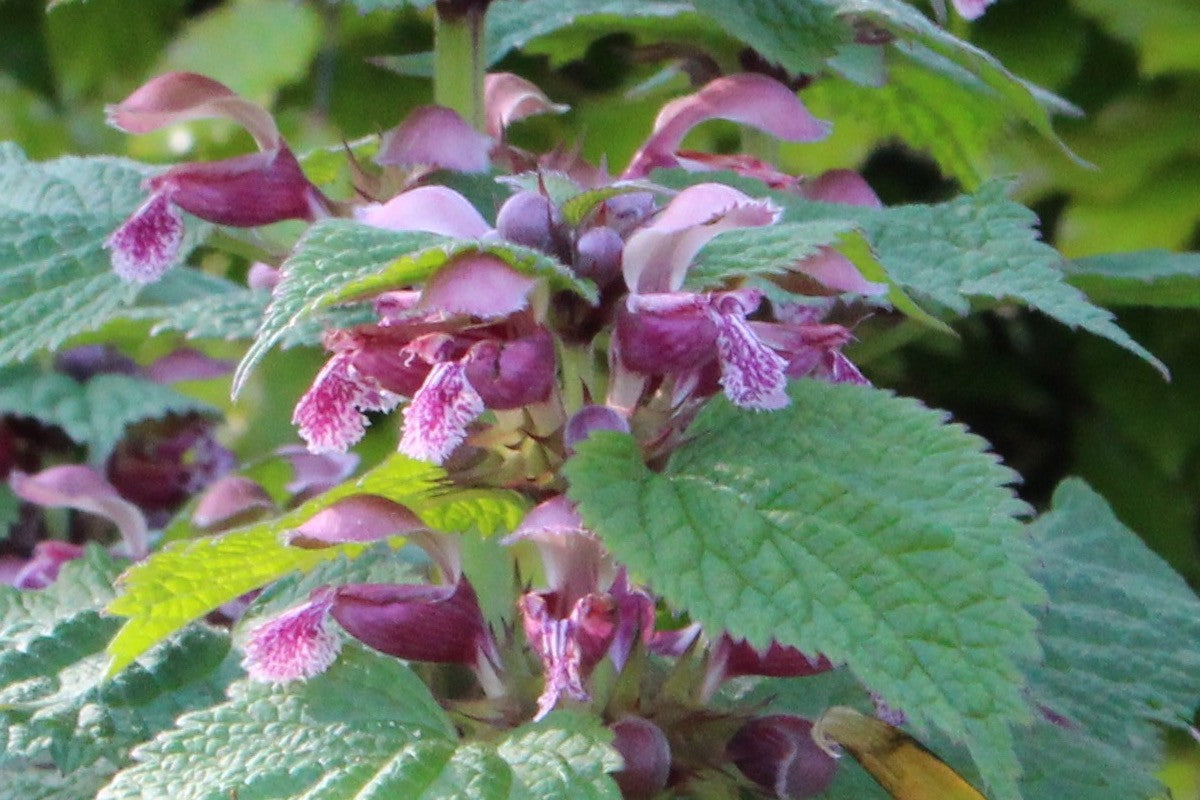Lamium orvala
Approx. 0.5 litre pot
About this cultivar:
Lamium orvala, commonly known as balm-leaved archangel, is a species native to central - eastern Europe. This one is an easy, non-invasive woodlander with large pink flowers. Despite being a woodlander it will also thrive in full sun if it has enough water. This makes a quite big plant and is very different from the invasive maculatum and similar types. I also think it has great autumn colour.
- Position: Full sun, partial shade, full shade
- Soil: Almost any soil, grows well in Ballyrobert
- Flowers: April, May, June
- Other features: Dappled Shade or Full Shade Loving, Great Ground Cover, Woodland Plant
- Hardiness: Fully hardy - grows well in Ballyrobert
- Habit: Mat forming
- Foliage: Deciduous
- Height: 30 - 60 cm (1 - 2 ft)
- Spread: 30 - 60 cm (1 - 2 ft)
- Time to full growth: 2 to 5 years
- Plant type: Herbaceous Perennial
- Colour: Green, pink
- Goes well with: --
About this genus:
Lamium is a genus of about 40-50 species of flowering plants in the family Lamiaceae, of which it is the type genus. They are all herbaceous plants native to Europe, Asia, and northern Africa, but several have become very successful weeds of crop fields and are now widely naturalised across much of the temperate world.
The genus includes both annual and perennial species; they spread by both seeds and stems rooting as they grow along the ground. We only have perennials here! They have distinctive square stems and coarsely textured pairs of leaves, often with striking patterns or variegation. They produce double-lipped flowers in a wide range of colours.
The common name deadnettle refers to the resemblance of Lamium album to the very distantly related stinging nettles, but unlike those, they do not have stinging hairs and so are harmless or apparently dead.
Several closely related genera were formerly included in Lamium by some botanists, including Galeopsis (hemp-nettles) and Leonurus (motherworts). But not anymore...
In gardens Lamiums are widely cultivated as groundcover, and numerous cultivars have been selected for garden use. They are frost hardy and grow well in almost any soil or situation (hence they are invasive in some parts of the world). I personally think of them as quite regal plants with wonderful flowers, and tend to think of them as different coloured Acanthus - suitable as a show plant in their own right!
As a rule of thumb the flower colour determines planting season and light requirement: white- and purple-coloured flowered species are planted in spring and prefer sun more than shade. The yellow-flowered ones are planted in autumn) and prefer shade over sun; but watch out - the yellow ones often have invasive habits and need plenty of room.




